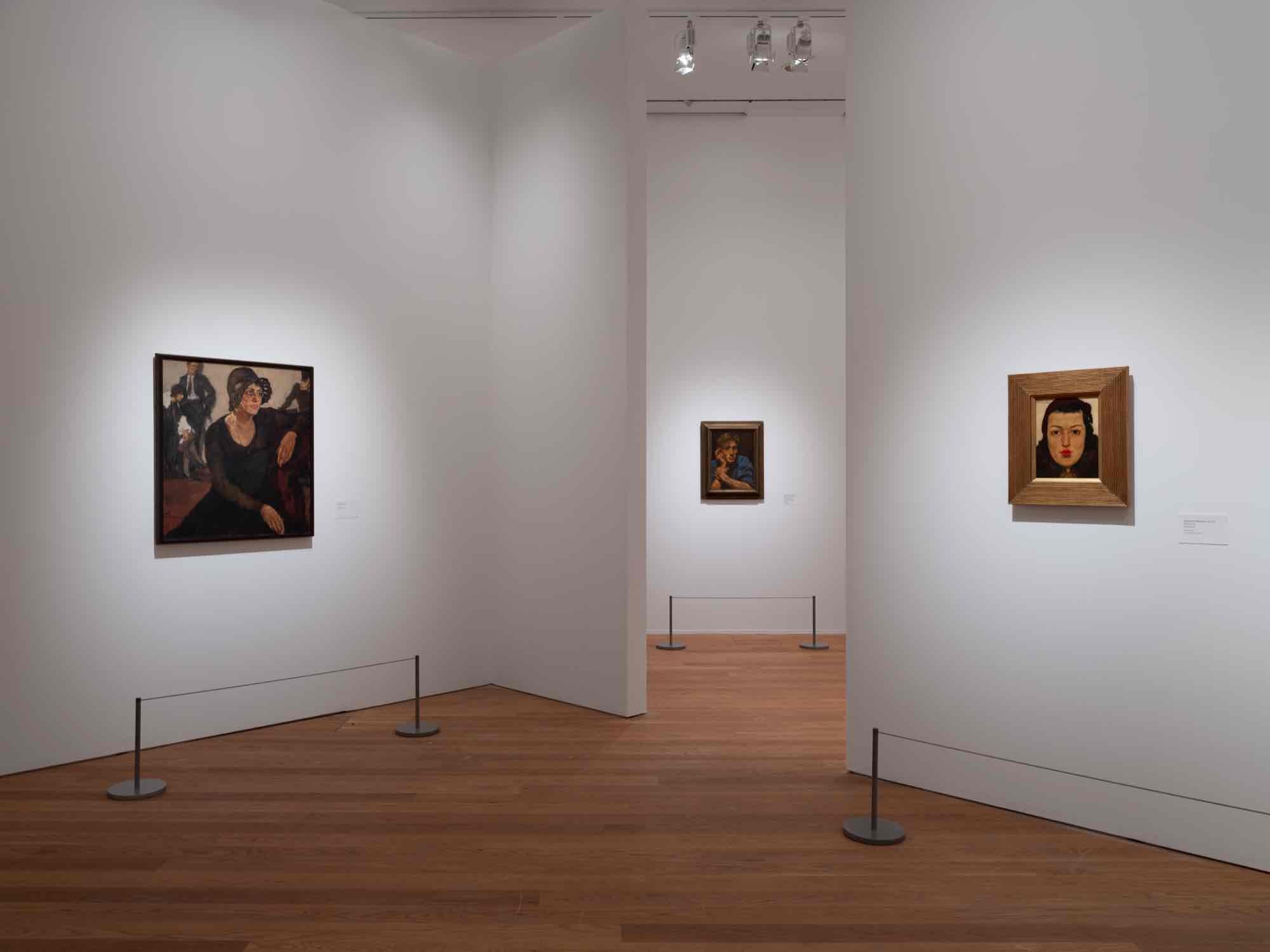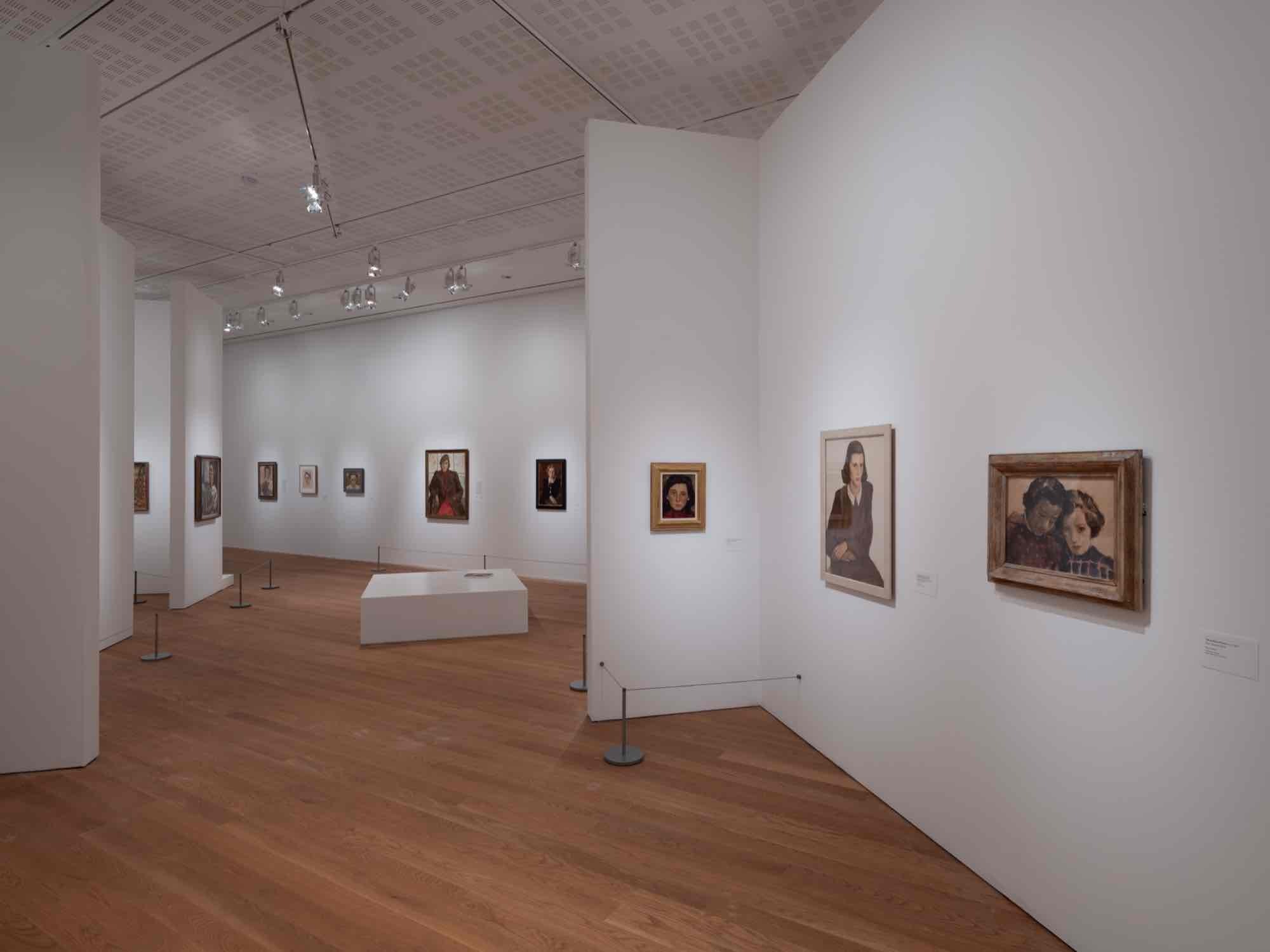Lotte Laserstein
A Divided Life
11 Nov 2023 - 14 Apr 2024
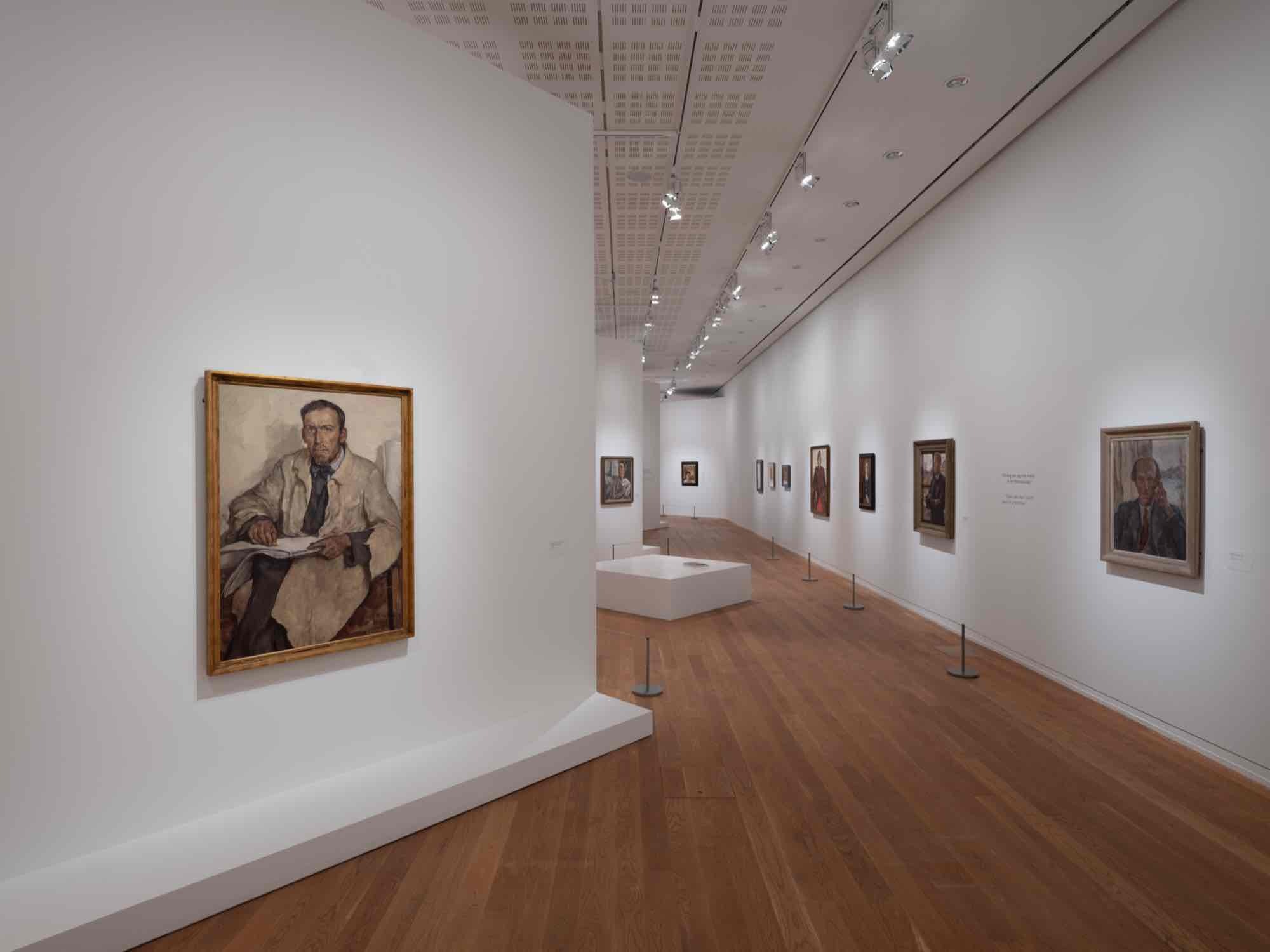
Lotte Laserstein, Walther Beyer, drawing (1947) Photo: Mattias Lindbäck/Moderna Museet © Lotte Laserstein Bildupphovsrätt 2023
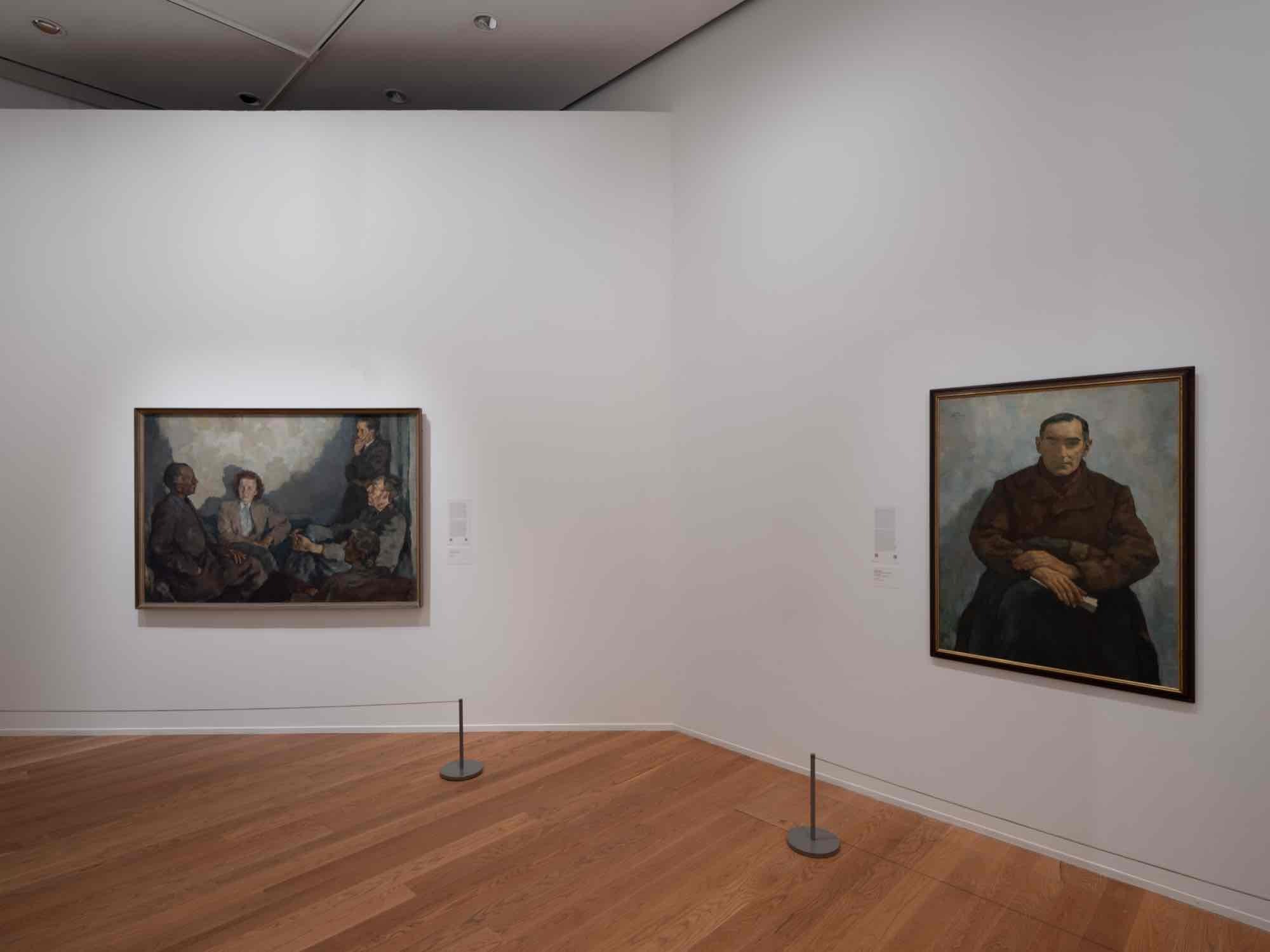
Lotte Laserstein, Evening Conversation (1948), The Émigré, Dr. Walter Lindenthal (1941) Photo: Mattias Lindbäck/Moderna Museet © Lotte Laserstein Bildupphovsrätt 2023
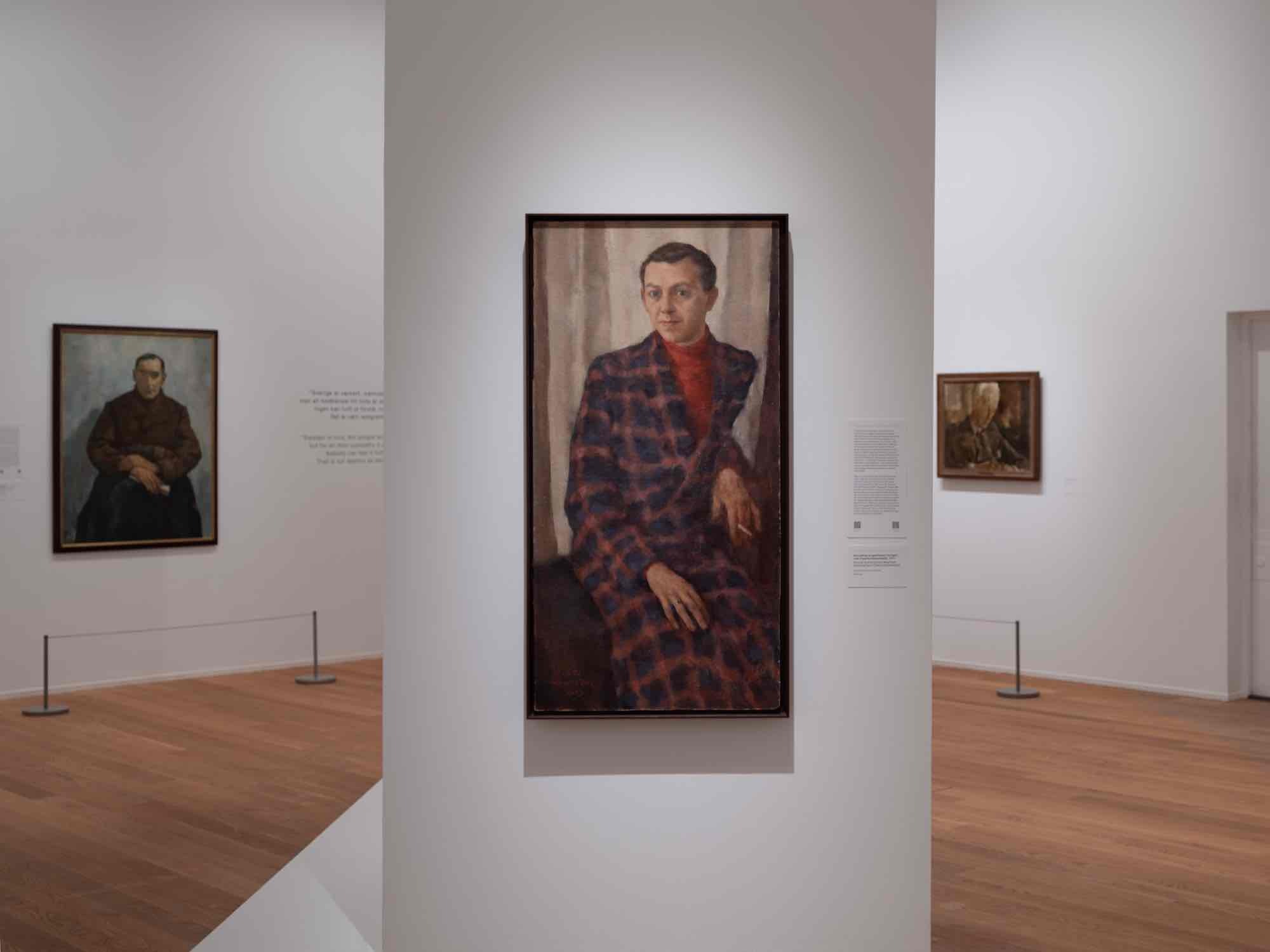
Lotte Laserstein, Portrait of a Gentleman Wearing a Dressing Gown (Jascha Golowanjuk), 1943 Photo: Mattias Lindbäck/Moderna Museet © Lotte Laserstein Bildupphovsrätt 2023
A Divided Life is the most extensive exhibition of work by the ground-breaking German-Swedish artist Lotte Laserstein to date in the Nordic Region. Following its success in Malmö, the exhibition is now opening at Moderna Museet in Stockholm. The show includes Laserstein’s large-scale masterpiece Evening Over Potsdam and will be accompanied by a comprehensive exhibition catalogue. A Divided Life focuses as much on the multifaceted works the artist created while in exile in Sweden as it does on those she made before leaving Germany.
Lotte Laserstein (1898–1993) is one of the art world’s most exciting recent rediscoveries. Exhibitions of her work in Germany have attracted broad audiences eager to explore this long-forgotten artist and have established a place for her in the history of twentieth-century art. However, these shows focused primarily on Laserstein’s work from the 1920s to the beginning of the 1930s – the period before she was forced to leave Germany and emigrate to Sweden.
The curators are Iris Müller-Westermann, formerly Museum Director of Moderna Museet Malmö and now Senior Curator at Moderna Museet in Stockholm, and Anna-Carola Krausse, an art historian and Laserstein expert based in Berlin. They say:
–For five decades, Laserstein produced an extremely comprehensive, thematic and stylistically multifaceted collection of works that has only partially come to light in earlier shows. In our exhibition, we ascribe the same status to this period of Laserstein’s life and work as to the time she lived in Berlin.
Career in 1920s Berlin
Lotte Laserstein’s career as an artist began in Berlin in the 1920s. After graduating from the Academy of Arts there in 1927 – as one of the first women to earn a degree – she quickly succeeded in making a name for herself in the city’s art scene.
Laserstein captured the spirit of an era in scenes from her studio and portraits of cosmopolitan, emancipated women. Her work reveals an intimate realism that weaves together painting tradition with contemporary themes. The paintings she executed in Berlin, in which she depicts her life as an artist, show us the many sides of the Weimar Republic’s modern “new woman”. These works are surprisingly current even today, particularly in light of the ongoing discussions around gender identity and queerness.
The success predicted for Lotte Laserstein and ascribed to her by German art critics in the 1920s ended abruptly in 1933 when the Nazis seized power. As a Jew, Laserstein was increasingly excluded from the public art world.
“My escape to Sweden broke my life in two.”
Thanks to an invitation to show her work at the Galerie Moderne in Stockholm in 1937, Laserstein was able to get out of Germany with some of her most important works and come to Sweden, where she would spend the greater part of her working life. In Sweden, she was able to build a new life for herself as a portrait and landscape painter.
Lotte Laserstein described her life and her career with the words: “My escape to Sweden broke my life in two.” This division has shaped the structure of the exhibition. The first part is devoted to the artist’s time in Berlin, with key works that illuminate her artistic beginnings and early successes in the Weimar Republic. The second part features Laserstein’s years in Sweden.
Iris Müller-Westermann and Anna-Carola Krausse:
–Through Lotte Laserstein’s representational commissioned portraits, expressive self-portraits, moving depictions of other immigrants, and landscapes and urban scenes, it is possible to discern what living in exile was like. Her Swedish work raises questions about what it means to lose one’s own cultural and social milieu and be forced to establish roots in a new society. Against the backdrop of today’s global migration patterns, the works Laserstein created while in exile in Sweden provide an important contribution to the ongoing dialogue around these issues.
Evening Over Potsdam (1930)
Evening Over Potsdam is one of Laserstein’s masterpieces. The tableau of young people sitting on a balcony at twilight in pensive silence poignantly symbolises the social crisis and perplexity that marked the end of the Weimar Republic.
In Sweden Laserstein retitled it Mina Vänner (My Friends), as if in homage to what she had left behind. The genesis of the painting is well documented. The long wooden panel on which it is painted was first transported with Berlin’s suburban rail service to Potsdam, and from there by horse and cart to its destination at the home of acquaintances who had a large roof terrace with a view across Potsdam. The friends got together for the first sketches, but the background and the protracted labour of painting the portraits was done in the Berlin studio.
Support for the exhibition A Divided Life is provided by Mannheimer Swartling, the Barbro Osher Pro Suecia Foundation, the Jacob Wallenberg Foundation and the Lotte Laserstein Exhibition Circle.
Lotte Laserstein (1898–1993) is one of the art world’s most exciting recent rediscoveries. Exhibitions of her work in Germany have attracted broad audiences eager to explore this long-forgotten artist and have established a place for her in the history of twentieth-century art. However, these shows focused primarily on Laserstein’s work from the 1920s to the beginning of the 1930s – the period before she was forced to leave Germany and emigrate to Sweden.
The curators are Iris Müller-Westermann, formerly Museum Director of Moderna Museet Malmö and now Senior Curator at Moderna Museet in Stockholm, and Anna-Carola Krausse, an art historian and Laserstein expert based in Berlin. They say:
–For five decades, Laserstein produced an extremely comprehensive, thematic and stylistically multifaceted collection of works that has only partially come to light in earlier shows. In our exhibition, we ascribe the same status to this period of Laserstein’s life and work as to the time she lived in Berlin.
Career in 1920s Berlin
Lotte Laserstein’s career as an artist began in Berlin in the 1920s. After graduating from the Academy of Arts there in 1927 – as one of the first women to earn a degree – she quickly succeeded in making a name for herself in the city’s art scene.
Laserstein captured the spirit of an era in scenes from her studio and portraits of cosmopolitan, emancipated women. Her work reveals an intimate realism that weaves together painting tradition with contemporary themes. The paintings she executed in Berlin, in which she depicts her life as an artist, show us the many sides of the Weimar Republic’s modern “new woman”. These works are surprisingly current even today, particularly in light of the ongoing discussions around gender identity and queerness.
The success predicted for Lotte Laserstein and ascribed to her by German art critics in the 1920s ended abruptly in 1933 when the Nazis seized power. As a Jew, Laserstein was increasingly excluded from the public art world.
“My escape to Sweden broke my life in two.”
Thanks to an invitation to show her work at the Galerie Moderne in Stockholm in 1937, Laserstein was able to get out of Germany with some of her most important works and come to Sweden, where she would spend the greater part of her working life. In Sweden, she was able to build a new life for herself as a portrait and landscape painter.
Lotte Laserstein described her life and her career with the words: “My escape to Sweden broke my life in two.” This division has shaped the structure of the exhibition. The first part is devoted to the artist’s time in Berlin, with key works that illuminate her artistic beginnings and early successes in the Weimar Republic. The second part features Laserstein’s years in Sweden.
Iris Müller-Westermann and Anna-Carola Krausse:
–Through Lotte Laserstein’s representational commissioned portraits, expressive self-portraits, moving depictions of other immigrants, and landscapes and urban scenes, it is possible to discern what living in exile was like. Her Swedish work raises questions about what it means to lose one’s own cultural and social milieu and be forced to establish roots in a new society. Against the backdrop of today’s global migration patterns, the works Laserstein created while in exile in Sweden provide an important contribution to the ongoing dialogue around these issues.
Evening Over Potsdam (1930)
Evening Over Potsdam is one of Laserstein’s masterpieces. The tableau of young people sitting on a balcony at twilight in pensive silence poignantly symbolises the social crisis and perplexity that marked the end of the Weimar Republic.
In Sweden Laserstein retitled it Mina Vänner (My Friends), as if in homage to what she had left behind. The genesis of the painting is well documented. The long wooden panel on which it is painted was first transported with Berlin’s suburban rail service to Potsdam, and from there by horse and cart to its destination at the home of acquaintances who had a large roof terrace with a view across Potsdam. The friends got together for the first sketches, but the background and the protracted labour of painting the portraits was done in the Berlin studio.
Support for the exhibition A Divided Life is provided by Mannheimer Swartling, the Barbro Osher Pro Suecia Foundation, the Jacob Wallenberg Foundation and the Lotte Laserstein Exhibition Circle.


